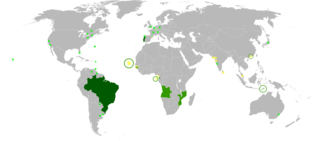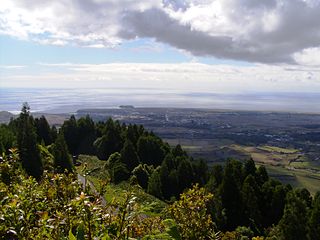
Vila do Porto is the single municipality, the name of the main town and one of the civil parishes on the island of Santa Maria, in the Portuguese archipelago of Azores. Its nearest neighbor, administratively, is the municipality of Povoação on the southern coast of São Miguel, and it is physically southwest of the islets of the Formigas. The population in 2011 was 5,552, in an area of 96.89 km².
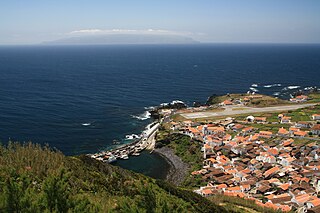
Vila do Corvo is the smallest municipality in the Portuguese archipelago of the Azores, constituting the island of Corvo in its entirety. With a population of 430 in 2011, it is the least populated of the Portuguese municipalities, and the only Portuguese municipality, by law, without a civil parish. Its area is 17.11 square kilometres (6.61 sq mi).

Mosteiro is the smallest civil parish in the municipality of Lajes das Flores on the Portuguese island of Flores, in the archipelago of the Azores. The population in 2011 was 43, in an area of 5.99 square kilometres (2.31 sq mi).
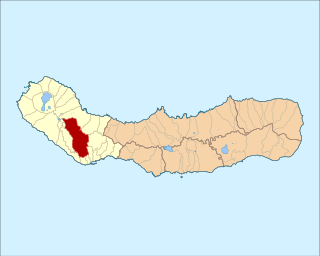
Arrifes is a civil parish in the municipality of Ponta Delgada on the island of São Miguel in the Azores. The population in 2011 was 7,086, in an area of 25.37 km².

Ribeira Grande is a municipality in the northern part of the island of São Miguel in the Portuguese Azores. The population in 2011 was 32,112, in an area of 180.15 km². The municipal seat is located in the civil parish of Matriz, with a population of about 4000 inhabitants, part of the urbanized core of what is commonly referred to as the city of Ribeira Grande.

Povoação is a municipality located in the southeastern corner of the island of São Miguel in the Portuguese archipelago of the Azores. The population in 2011 was 6,327, in an area of 106.41 km².

Almagreira is a civil parish in the municipality of Vila do Porto on the island of Santa Maria, in the Portuguese autonomous region of Azores. The population in 2011 was 599, in an area of 11.22 km². Bordering all other parishes of the island, it is located northwest of Vila do Porto.

Santo Espírito is a Portuguese civil parish, located in the municipality of Vila do Porto, in the autonomous region of Azores. The population in 2011 was 588, in an area of 26.68 km².
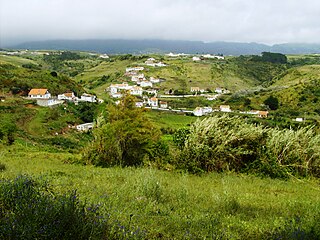
Vila do Porto is a civil parish in the municipality of Vila do Porto, located on the island of Santa Maria, in the Portuguese autonomous region of Azores. It is the southernmost and easternmost parish in the archipelago of Azores. The population in 2011 was 3,119, in an area of 25.55 km².

The Convent of São Francisco, originally designated the Convent of Nossa Senhora da Vitória, located in the Largo of Nossa Senhora da Conceição, in the civil parish of Vila do Porto, municipality of the same name on the island of Santa Maria, in the Portuguese in the Azores.
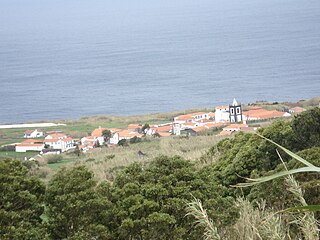
The Church of Santa Bárbara is a church in the civil parish of Cedros, municipality of Horta, on the Portuguese island of Faial in the archipelago of the Azores. Its parish falls within the Roman Catholic Diocese of Angra, and serves the parishioners of the northern coast from the border with Salão to Ribeira Funda.

The Convent of Caloura is a Portuguese 16th-century convent located in the civil parish of Água de Pau, in the municipality of Lagoa, on the island of São Miguel in the archipelago of the Azores.

The Church of Nossa Senhora do Bom Despacho is the parochial church of the civil parish of Almagreira, located in the municipality of Vila do Porto, Portuguese archipelago of the Azores. It is a church of masonry, plastered and painted, constructed with decorative pilasters, friezes and cornices, molds and corner pinnacles, with a carved retable and tile covering.
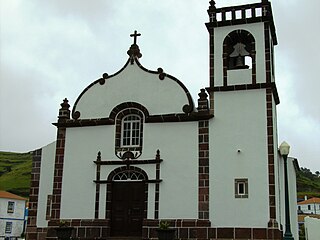
The Church of Santa Bárbara is a Roman Catholic church in the civil parish of Santa Bárbara, municipality of Vila do Porto, in the archipelago of the Azores. Located in the valley of the same name, the parochial church of Santa Bárbara was constructed sometime in the early 15th century and served the impoverished parish throughout its history, supported by personal donations and community assistance.

The (Old) Church of São Mateus da Calheta are the ruins of a 16th-century church situated along the coast of the civil parish of São Mateus da Calheta, municipality of Angra do Heroísmo, on the Portuguese island of Terceira, in the archipelago of the Azores. Reconstructed at the end of the 17th, or beginning of the 18th, century, the church was abandoned after a hurricane caused severe damage. The interior includes a baptismal font dating to the 16th century, although largely an open air ruin; the structure has experienced several interventions throughout the centuries, with the building painted and maintained in its post-hurricane state.
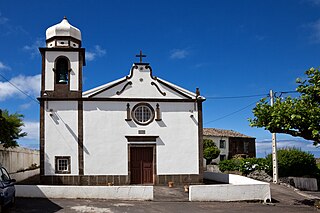
The Church of Santíssima Trindade is an 18th century church located in the civil parish of Mosteiro in the municipality of Lajes das Flores, in the Portuguese island of Flores, in the archipelago of the Azores.
The Church of Nossa Senhora dos Milagres is an 18th century church located in the civil parish of Lajedo in the municipality of Lajes das Flores, in the Portuguese island of Flores, in the archipelago of the Azores.
The Church of São Caetano is a 17th-century church located in the civil parish of Lomba in the municipality of Lajes das Flores, in the Portuguese island of Flores, in the archipelago of the Azores.
The Church of Benditas Almas is a 19th-century church located in the civil parish of Caveira in the municipality of Santa Cruz das Flores, in the Portuguese island of Flores, in the archipelago of the Azores.

The Church of Nossa Senhora da Conceição is an 18th-century church located in the civil parish of Santa Cruz in the municipality of Santa Cruz das Flores, in the Portuguese island of Flores, in the archipelago of the Azores.

